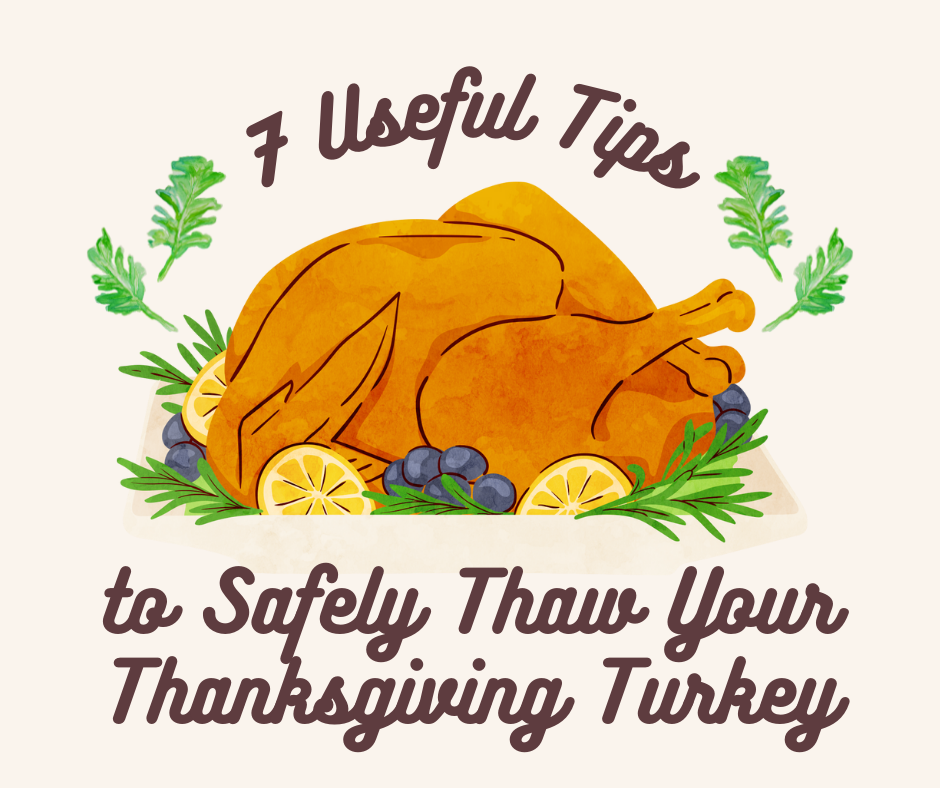
Getting ready for Thanksgiving? Scrambling to get all your scrumptious dishes out in time for the celebration? Ready to eat yourself senseless and unbutton your pants in the classic “I just ate too much” stance? You’re not the only one. With Thanksgiving looming, many households in the United States are undoubtedly preparing for the awesome feast they’re about to have.
A common staple—and often the highlight—of Thanksgiving dinner is the turkey. This large bird can feed an entire village and then some. However, we must always practice caution when handling and cooking this large bird. That’s because when not thawed, done, or cooked properly, Thanksgiving turkey might just make you sick. You definitely wouldn’t be thankful for that, would you?
Below, we share our seven tips to properly thaw and cook your Thanksgiving turkey.
1. Wash Your Hands Before Handling Raw Turkey
If there’s anything the pandemic taught us, it’s the importance of washing our hands. This prevents bacteria not only from entering our systems but prevents bacteria from contaminating other surfaces and contaminating other people.
Before you handle your turkey, you should always wash your hands. Don’t wash the turkey! The contaminated water can splash all over the kitchen and make things worse. Just wash your hands with warm water and soap for at least thirty seconds instead.
After handling your turkey, you need to wash your hands again. You should also wash everything else that’s been in contact with the turkey like cutting boards, meat thermometers, kitchen utensils, and more.
2. Don’t Defrost Turkey at Room Temperature
Some people like to defrost their meats at room temperature. This certainly works for smaller cuts of meat like chicken and fish, but for a turkey, this is an absolute no-no. What happens is that the outside defrosts first while the insides are completely frozen. This then allows pathogens to grow on the outside while you’re still waiting for the rest of the turkey to defrost.
There are more responsible ways to thaw your turkey, and we highlight them below.
3. Slowly Thaw Your Turkey in the Refrigerator
Thawing your turkey in the refrigerator is the best way to do it, according to the United States Department of Agriculture. It’ll take several days to do so, which is why food safety professionals highly encourage people to plan for their Thanksgiving dinners. You need to know when exactly to remove your turkey from the freezer, how to fit your turkey in the fridge, and more.
Thawing your turkey the refrigerator way will take one day for every four pounds of turkey. Thus, a 16-pound turkey will take four days.
To do this, you should have a large, shallow pan to catch any drippings from the turkey. Place it on top of this pan, and then place the pan on the bottommost part of the fridge to prevent the turkey from dripping over the rest of your food.
4. If You Thaw It in the Microwave, Don’t Put It Back in the Fridge
Microwaving your turkey is, by far, the fastest way to thaw out your Thanksgiving turkey. It only takes six minutes per pound of turkey, meaning that a 16-pounder will take around an hour and a half to thaw. It’s completely safe and is one of the three thawing methods recommended by the United States Department of Agriculture!
However, know that once you microwave that turkey, there’s no going back. Microwaving creates hot spots in the turkey that are perfect for pathogen growth, so you must pop the turkey in the oven as soon as possible to fully cook.
5. If You Thaw in Cold Water, Change the Water and Rotate the Turkey Often
To thaw your Thanksgiving turkey in cold water, place the turkey in a large, leak-proof plastic bag. Then, submerge it in cold water for a half-hour for every pound of meat. For example, a regular 16-pound turkey will take you 8 hours to thaw.
You must never let the turkey defrost too quickly. You should always be on standby, switching out the water bath when it starts getting lukewarm. You should also rotate the turkey once in a while to help thaw out the turkey evenly—cold water is denser than warmer water.
6. Never Thaw Your Turkey in Hot Water
You might think that thawing your turkey in hot water will speed up the process, but all you’re doing is inviting illnesses and infections. Indeed, thawing your turkey in hot water is the number one thing you shouldn’t do for Thanksgiving preparations!
When turkey gets to a certain temperature without being cooked, it allows for bacteria and germs to invade, which surely you don’t want as a Thanksgiving side dish. Don’t be lazy—instead, just work on the other side dishes while waiting for your turkey to properly thaw.
7. Cook Frozen Turkey to a Certain Temperature
If thawing your turkey for Thanksgiving has completely slipped your mind, don’t fret: there’s still a way to salvage your Thanksgiving dinner! Thankfully, you can still roast a frozen turkey—it just takes 50% more time to do so. This means around 6 to 7 hours for a 16-pound turkey.
Cooking frozen turkey takes more effort to get right because you’ll need to constantly check the internal temperature of the meat. Raw turkey needs to be cooked to an internal temperature of 165o Fahrenheit. This is the temperature the Centers for Disease Control and Prevention recommend before consuming. Make sure to check the internal temperature in multiple spots—some parts could be undercooked when others are already cooked.



